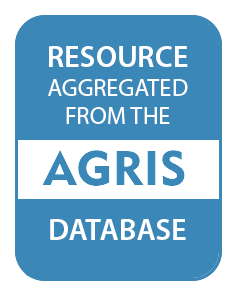Location
Resources
Displaying 31 - 35 of 43Model for performance based land area and water allocation within irrigation schemes
This paper focuses on irrigation schemes under rotational water supply in arid and semiarid regions. It presents a methodology for developing plans for optimum allocation of land area and water, considering performance measures such as productivity, equity and adequacy. These irrigation schemes are characterized by limited water supply and heterogeneity in soils, crops, climate and water distribution network, etc.
Centres of Crop Diversity and/or Origin, Genetically Modified Crops and Implications for Plant Genetic Resources Conservation
The concept of centres of crop diversity and/or origin of agriculture is briefly reviewed. The conservation status of crop genetic resources, either ex situ or in situ, cultivated or wild, has been assessed for species of the Central American and Mexican centre, demonstrating that that region is indeed one of the important centres of crop diversity for human kind. Furthermore, biotechnological developments with regard to the creation and spread of genetically modified crops have been analyzed.
Field Validation of DNDC Model for Methane and Nitrous Oxide Emissions from Rice-based Production Systems of India
The DNDC (DeNitrification and DeComposition) model was tested against experimental data on CH₄ and N₂O emissions from rice fields at different geographical locations in India. There was a good agreement between the simulated and observed values of CH₄ and N₂O emissions. The difference between observed and simulated CH₄ emissions in all sites ranged from −11.6 to 62.5 kg C ha⁻¹ season⁻¹. Most discrepancies between simulated and observed seasonal fluxes were less than 20% of the field estimate of the seasonal flux.
Definition of British Water Beetle Species Pools (Coleoptera) and their Relationship to Altitude, Temperature, Precipitation and Land Cover Variables
Pooled water beetle species lists from 1826 British national grid 10-km squares were analysed using multivariate ordination and classification methods. The relationships of pool groups to the climate, altitude and land cover variables were assessed using constrained and partial ordinations. Ordination of the species pool data indicated a major trend between squares in the north-west of Scotland and those in southern England, illustrating differences in acid and basic water standing water. Secondary variation was from acid standing water to fast-flowing streams and rivers.
Relationship between Riparian Vegetation and Stream Benthic Communities at Three Spatial Scales
We examined the influence of riparian vegetation on macroinvertebrate community structure in streams of the Upper Thames River watershed in southwestern Ontario. Thirty-three μ-basins (129–1458 ha) were used to identify land cover variables that influenced stream macroinvertebrates. Micro-basins represented the entire drainage area of study streams and were similar in stream order (first, second) and land cover (agricultural or forest; no urban). We described the structure and composition of riparian vegetation and benthic macroinvertebrate communities at the outflow reach.


